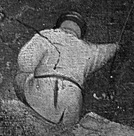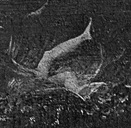Stephen Yablo, Aboutness (Princeton University Press, 2014)
I have been thinking about ‘aboutness’ for a while. I bring it up when discussing students’ essays. (My point is usually that there are lots of ways in which literature can be ‘about’ things, and they need careful handling.) It is partially broached in one of this blog’s earliest forays, and it is pivotal here, where I consider the ways in which poems might encounter, and/or reveal, what they are really about.
I had been looking forward to reading Yablo’s book, because I hoped a head-on approach to the idea might help. I think the difficulty of describing ‘What Literature Knows About Your Brain’ lies mostly in the problem of ‘knowledge’ but partly in the problem of ‘about’. The book was helpful and interesting, perhaps mostly in revealing the differences between my way of thinking, and that of a philosopher of language whose goal is to assess how much subject matter is part of the truthfulness of statements.
*
Let’s take three illustrative examples of the kind of thing Yablo wants to deal with. He wants to deal with sentences such as ‘Maine is Prosperous’, where as well as being about Maine, and true of Maine, the sentence is also about New England, and true at least about a part of New England. He wants to deal with sentences like ‘I watched her drift slowly out to sea, until she became a dot on the horizon’ (an example taken from Saul Kripke), which ‘taken at face value, seems incomprehensible’, but nevertheless has some truth, and some aboutness. He also wants to deal with hypothetical scenarios, like one posited by Nelson Goodman and Joseph Ullian, in which testimony in court is (i) about the defendant, and (ii) false, but which (the lawyer claimed) (iii) was not false about the defendant.
In all these cases, and many others, Yablo develops an account of how subject-matter, ‘aboutness’, is connected to the truth contained in sentences. It took me a little while to realise (this is how naïve I am in the face of philosophical rigour) how insistently Yablo was attending to the sentences in themselves, and not to what hearers or readers might make of them. He helpfully pointed this out, distinguishing himself from , where the emphasis is on how a communication is received, processed, understood. It seemed to me that understanding literature tends to, and perhaps needs to, incorporate the reception of words, and their strange lives in the world, as well as their inherent meaningfulness, truthfulness, and/or aboutness.
*
The three examples cited above can help me illustrate what I mean, and I would like to suggest ways in which they open up (very slightly) possible ways of getting at ‘What Literature Knows About Your Brain’. These offer a partial response to some of the fascinating and challenging issues Emily Troscianko brought up in her recent post. The scepticism she encourages in relation to some claims about the benefits of reading literature is important and necessary. But here I am going to suggest that it may have an affinity with an emphasis on the inherent meaningfulness and aboutness of literary works, that parallels Yablo’s way of thinking. So, with that in mind, here are some other ways of looking at Yablo’s examples.
(i) The testimony which is false, and about the defendant, but not false about the defendant.
It is not difficult to think of circumstances in which this could work. A witness offers a mistaken and mendacious account of events in which a bit-part played by the defendant happens to be true; or, a witness tells an untrue story that nevertheless conveys the truth about the defendant (that he is a thief, for example). What catches my attention here, more than it would Yablo I think, is the allowance that the truth might emerge indirectly. Literature, after all, is false in its own way, and yet can be about real things, and can tell the truth about real things. Like the mind, perhaps.
I have been mulling over this formula, with uncertain results. Waiting for Godot, for example, is not a truthful representation of anything, and it is not about the society we live in, and yet it might be true about the world we live in. King Lear is not about the psychology of the aging brain, nor is it a true story, and yet it may have truth to tell about the psychology of the aging brain. I find the of these statements suggestive, but I am not sure what to do with it.
(ii) I watched her drift slowly out to sea, until she became a dot on the horizon.
As we saw above, Yablo, following Kripke, invites us to recognise that this is incomprehensible at literal face value. How could she become a dot? I have no quarrel with this within the realm of logic, but I think the ‘face value’ scenario is an unreal one. In reality, nearly anyone encountering this sentence would find it perfectly transparent, to the extent that its figurative components are a kind of ‘face value’. We are good at not taking ‘became’ to mean ‘literally turned into’, and ‘dot’ to mean ‘a dot’ rather than ‘the vanishing point state of any distant or receding object’. It’s interesting, I think, to keep track of where the Oxford English Dictionary determines that a figurative use has become a usage accepted enough to earn its place. In the case of ‘become’ and ‘dot’ there isn’t anything along the lines I am suggesting, but (especially in the case of ‘dot’) there could be. Here too the interest might be in the lucidity of misdirection, the intuitive ease with which logic-challenging sentences can be navigated.
(iii) Maine is prosperous.
The dryness of the broadened meanings brought in by Yablo made me think of further things this statement could be about. I was drawn towards the sort of scenarios written by Relevance Theorists, in which processes of inference put statements into contexts that give them meaning. For some reason it took cinematic form.
Exterior: a smart, neat, small, shop, the sign saying ‘Murdoch’s Wine Shop, Bringing The Best To The People Of Vermont, Est. 2007’. In the window, a hand-written sign saying ‘Reduced: Zind-Humbrecht Gewurztraminer ONLY $29.95’. There is one car outside. Things seem quiet.
Interior: a couple behind the counter. The man is earnest, calm. The woman is tense. A customer comes in, checks several price tags, exits.
WOMAN: Maine is prosperous.
The man sighs.
The point is that we might infer that the woman’s statement is really about the economic fortunes of the wine shop, which might be improved by a move, or a recognition that Vermont is not the place for it. We take it that the man knows exactly what she means. Nothing in the sentence itself conveys this, of course, and this case I have outlined is far beyond the allowance that the statement could also be ‘about’ New England. My point is again that outside the logician’s severe restrictions, it proves possible to discover aboutness and truth in contingent, emergent ways.
*
I think this is in some way a response to scepticism in and preceding Emily Troscianko’s post. It is also a concession (a predictable one) in relation to ‘What Literature Knows About Your Brain’. The ‘aboutness’ and the ‘truth’ are not always or often going to arise at the explicit level, in the kind of sentences Yablo is concerned with. They will arise at moments where (for example) something is untrue in general but true about something particular; where something that offers no truth at the literal level nevertheless strikes us all as true; where something becomes meaningful in a context that has to be supplied from somewhere else. The outcome may be quite compelling but it will certainly be hard to summarise; it might resonate widely but it will not readily take the form of a general rule. This does not disallow the possibility that a work of literature may tell the truth about what it is about, but it broadens some possibilities.
There are, no doubt, many places in the philosophy of literature where I could refine my thinking about these issues. In the end I don’t think I have the philosophical training or temperament to do Aboutness justice. But it proved very suggestive.


